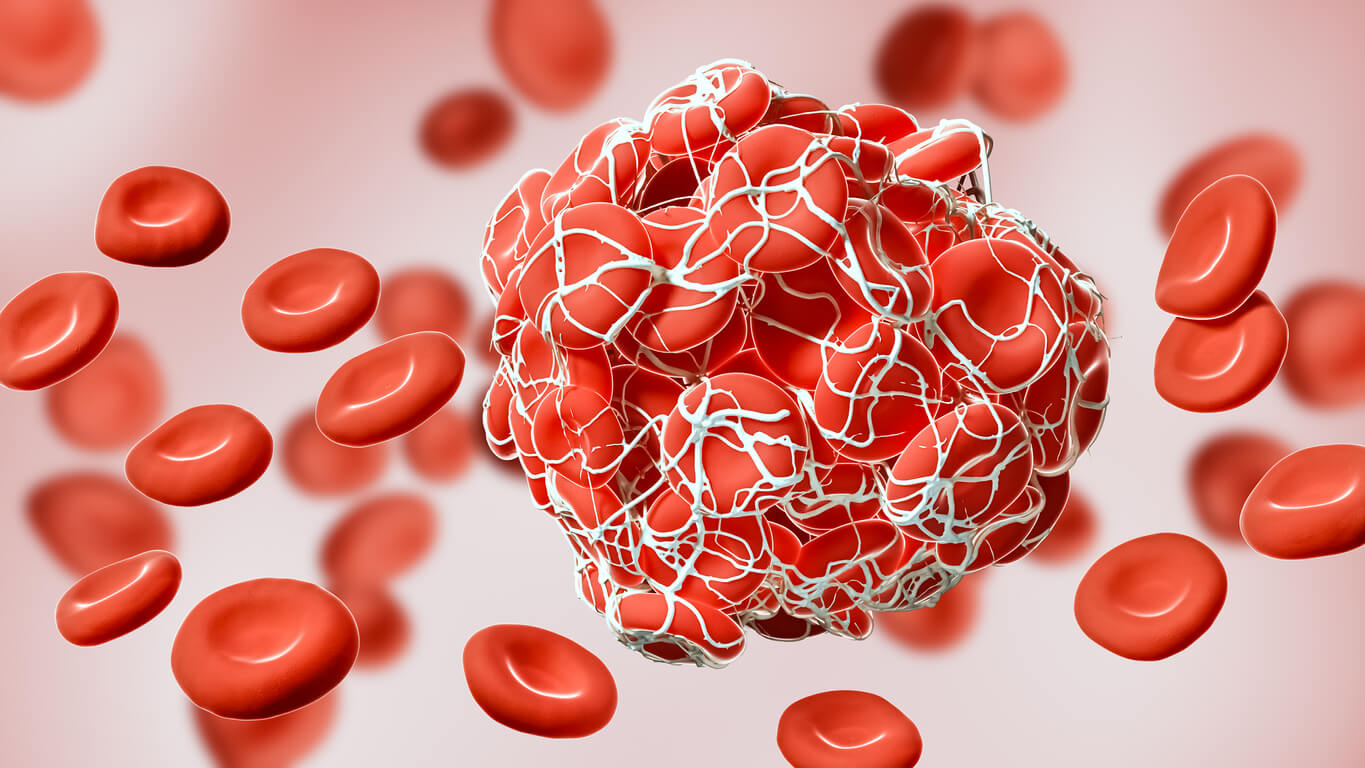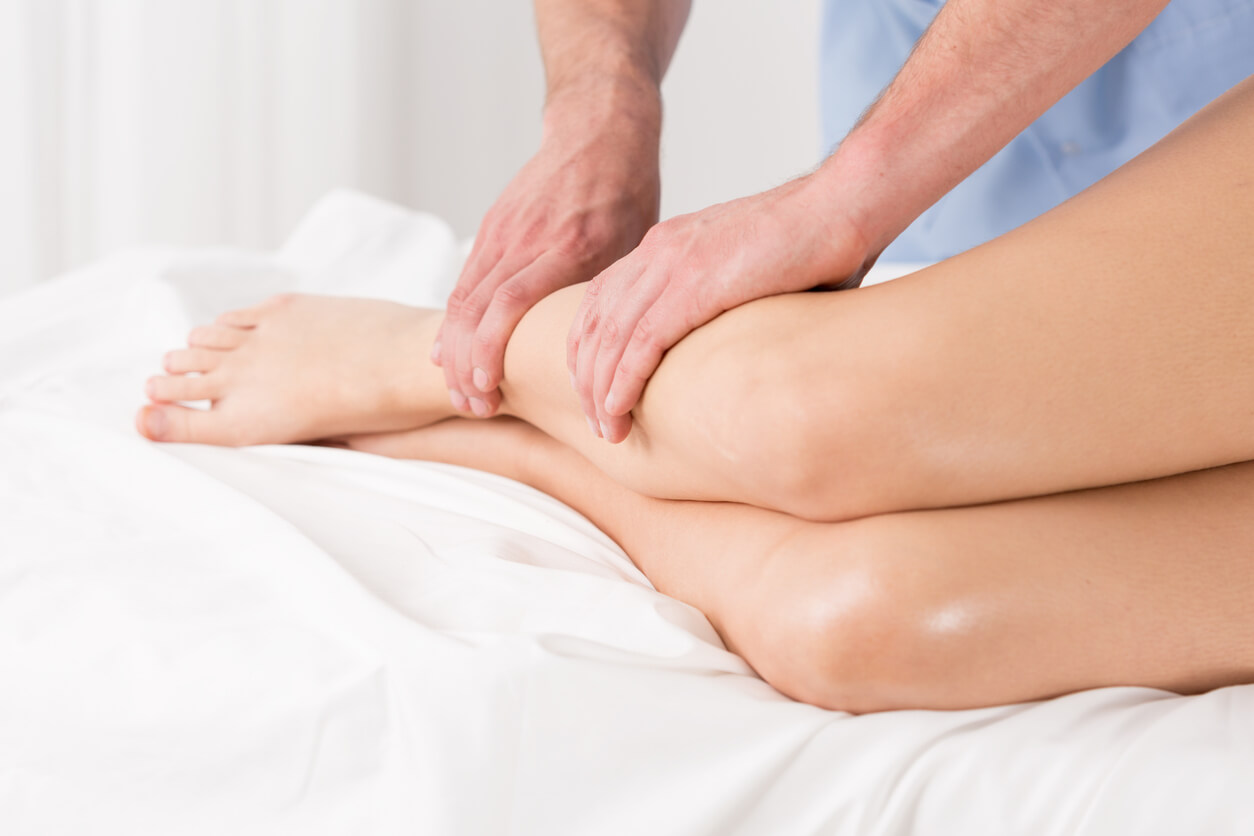What Is Gestational Edema?

Gestational edema is one of the most common conditions that occur during pregnancy. In fact, most moms-to-be experience swelling in different parts of the body. Here, we’ll tell you all about it.
What causes gestational edema?
During pregnancy, the amount of fluid in the body increases. That is, the total volume of body water can increase up to approximately 8 liters, according to a publication in the European Journal of Clinical Nutrition.
Therefore, the plasma volume increases by 50%, along with the total blood volume. While much of the fluid remains inside the cells, the rest accumulates on the outside in order to fulfill the following functions:
- Control the flow of electrolytes
- Eliminate waste products
- Improve oxygen supply
Blood volume peaks in the third trimester of pregnancy to meet the needs of the placenta and maternal organs. For this reason, swelling along with other discomforts reach their peak in this phase.
In turn, the two most important conditions during pregnancy that can produce gestational edema are the presence of a blood clot and preeclampsia. Let’s see what they are.
Preeclampsia
Preeclampsia is a complication that affects about 5% of pregnant women. It usually appears around the 20th week of gestation. The three main symptoms of this condition include the following:
- Proteinuria (presence of protein in the urine)
- Elevated blood pressure
- Edema
This is a disease that must be addressed urgently, as it can have negative consequences for the mother or the baby. The edema is characterized by localization on the hands, face, or around the eyes. In addition, it occurs suddenly and gradually worsens. It may also be accompanied by severe headache, abdominal pain, vision disturbances, and rapid weight gain.
Read also: Why Do I Have Itchy Skin during Pregnancy?

The presence of blood clots
The gestation period is a risk factor for the development of blood clots in the legs, thighs, or pelvis, called deep vein thrombosis (DVT). In fact, a review conducted in 2017 concluded that pregnancy increases the chance of thrombosis fivefold.
DVT is a fairly serious condition at this stage and requires urgent medical intervention, as it can trigger a pulmonary embolism. The edema is localized, usually affecting only one lower limb, and has the following symptoms:
- Erythema
- Tenderness
- Significant pain
- Local heat
Symptoms of gestational edema
In most cases, it’s common to find edema in the ankles, legs, feet, and toes during the stage of pregnancy. Swelling even tends to increase towards the end of the day, with greater prevalence in the parts of the body furthest from the heart.
Therefore, hot days or standing for too long can promote edema, so the legs and feet will appear to have more volume. Other possible symptoms may include paresthesia (tingling sensation), discomfort, or pain.
You may be interested in: Ankle Swelling During Pregnancy: Causes and What to Do
Tips for managing gestational edema
Although gestational edema is usually unavoidable, there are some measures that can help alleviate or prevent it. Here are some of them:
- Elevate the legs to help fluid return to the heart.
- Drink more water to eliminate excess sodium from the body.
- Use compression stockings to stimulate proper circulation.
- Avoid hot or very humid environments.
- Reduce foods with a high concentration of sodium, such as ultra-processed foods, packaged products, and fast food.
- Avoid tight-fitting shoes or shoes with buckles that are too tight.

Is lymphatic drainage helpful?
One of the safest options is to go to a specialized center for lymphatic drainage. It’s a harmless procedure to reduce the discomfort caused by swollen legs.
In general, slow and painless manual massages are performed on the lymphatic system to stimulate the reabsorption of fluid that’s retained on the outside of the blood vessels. Some of the benefits of this assisted treatment include the following:
- It reduces edema and stiffness of the extremities.
- It helps the elimination of toxins.
- It promotes muscle relaxation and relieves pain.
- And it diminishes the appearance of cellulite by promoting a toned appearance of the skin.
Gestational edema is a common condition
In conclusion, there’s a normal level of edema that affects the vast majority of pregnant women. It even peaks in the last trimester of gestation. As a means of prevention, it’s a good idea to elevate the legs during the day and drink plenty of water to try to reduce fluid retention.
Gestational edema is one of the most common conditions that occur during pregnancy. In fact, most moms-to-be experience swelling in different parts of the body. Here, we’ll tell you all about it.
What causes gestational edema?
During pregnancy, the amount of fluid in the body increases. That is, the total volume of body water can increase up to approximately 8 liters, according to a publication in the European Journal of Clinical Nutrition.
Therefore, the plasma volume increases by 50%, along with the total blood volume. While much of the fluid remains inside the cells, the rest accumulates on the outside in order to fulfill the following functions:
- Control the flow of electrolytes
- Eliminate waste products
- Improve oxygen supply
Blood volume peaks in the third trimester of pregnancy to meet the needs of the placenta and maternal organs. For this reason, swelling along with other discomforts reach their peak in this phase.
In turn, the two most important conditions during pregnancy that can produce gestational edema are the presence of a blood clot and preeclampsia. Let’s see what they are.
Preeclampsia
Preeclampsia is a complication that affects about 5% of pregnant women. It usually appears around the 20th week of gestation. The three main symptoms of this condition include the following:
- Proteinuria (presence of protein in the urine)
- Elevated blood pressure
- Edema
This is a disease that must be addressed urgently, as it can have negative consequences for the mother or the baby. The edema is characterized by localization on the hands, face, or around the eyes. In addition, it occurs suddenly and gradually worsens. It may also be accompanied by severe headache, abdominal pain, vision disturbances, and rapid weight gain.
Read also: Why Do I Have Itchy Skin during Pregnancy?

The presence of blood clots
The gestation period is a risk factor for the development of blood clots in the legs, thighs, or pelvis, called deep vein thrombosis (DVT). In fact, a review conducted in 2017 concluded that pregnancy increases the chance of thrombosis fivefold.
DVT is a fairly serious condition at this stage and requires urgent medical intervention, as it can trigger a pulmonary embolism. The edema is localized, usually affecting only one lower limb, and has the following symptoms:
- Erythema
- Tenderness
- Significant pain
- Local heat
Symptoms of gestational edema
In most cases, it’s common to find edema in the ankles, legs, feet, and toes during the stage of pregnancy. Swelling even tends to increase towards the end of the day, with greater prevalence in the parts of the body furthest from the heart.
Therefore, hot days or standing for too long can promote edema, so the legs and feet will appear to have more volume. Other possible symptoms may include paresthesia (tingling sensation), discomfort, or pain.
You may be interested in: Ankle Swelling During Pregnancy: Causes and What to Do
Tips for managing gestational edema
Although gestational edema is usually unavoidable, there are some measures that can help alleviate or prevent it. Here are some of them:
- Elevate the legs to help fluid return to the heart.
- Drink more water to eliminate excess sodium from the body.
- Use compression stockings to stimulate proper circulation.
- Avoid hot or very humid environments.
- Reduce foods with a high concentration of sodium, such as ultra-processed foods, packaged products, and fast food.
- Avoid tight-fitting shoes or shoes with buckles that are too tight.

Is lymphatic drainage helpful?
One of the safest options is to go to a specialized center for lymphatic drainage. It’s a harmless procedure to reduce the discomfort caused by swollen legs.
In general, slow and painless manual massages are performed on the lymphatic system to stimulate the reabsorption of fluid that’s retained on the outside of the blood vessels. Some of the benefits of this assisted treatment include the following:
- It reduces edema and stiffness of the extremities.
- It helps the elimination of toxins.
- It promotes muscle relaxation and relieves pain.
- And it diminishes the appearance of cellulite by promoting a toned appearance of the skin.
Gestational edema is a common condition
In conclusion, there’s a normal level of edema that affects the vast majority of pregnant women. It even peaks in the last trimester of gestation. As a means of prevention, it’s a good idea to elevate the legs during the day and drink plenty of water to try to reduce fluid retention.
All cited sources were thoroughly reviewed by our team to ensure their quality, reliability, currency, and validity. The bibliography of this article was considered reliable and of academic or scientific accuracy.
- Widen, E. M., & Gallagher, D. (2014). Body composition changes in pregnancy: measurement, predictors and outcomes. European journal of clinical nutrition, 68(6), 643–652. https://doi.org/10.1038/ejcn.2014.40
- Abalos E, Cuesta C, Grosso AL, Chou D, Say L. Global and regional estimates of preeclampsia and eclampsia: a systematic review. Eur J Obstet Gynecol Reprod Biol. 2013 Sep;170(1):1-7. doi: 10.1016/j.ejogrb.2013.05.005. Epub 2013 Jun 7. PMID: 23746796.
- Devis, Paola, and M Grace Knuttinen. “Deep venous thrombosis in pregnancy: incidence, pathogenesis and endovascular management.” Cardiovascular diagnosis and therapy vol. 7,Suppl 3 (2017): S309-S319. doi:10.21037/cdt.2017.10.08
- Cataldo Oportus S, de Paiva Rodrigues L, Pereira de Godoy JM, Guerreiro Godoy Mde F. Lymph drainage in pregnant women. Nurs Res Pract. 2013;2013:364582. doi: 10.1155/2013/364582. Epub 2013 Oct 22. PMID: 24251034; PMCID: PMC3819918.
This text is provided for informational purposes only and does not replace consultation with a professional. If in doubt, consult your specialist.








